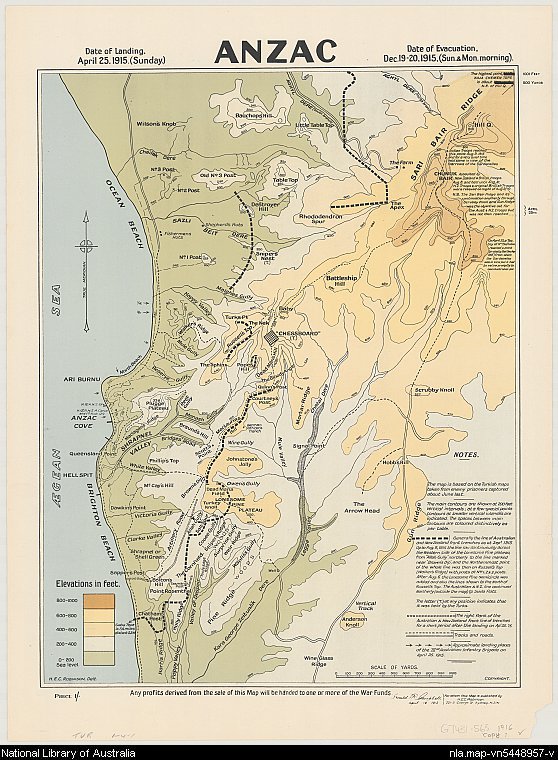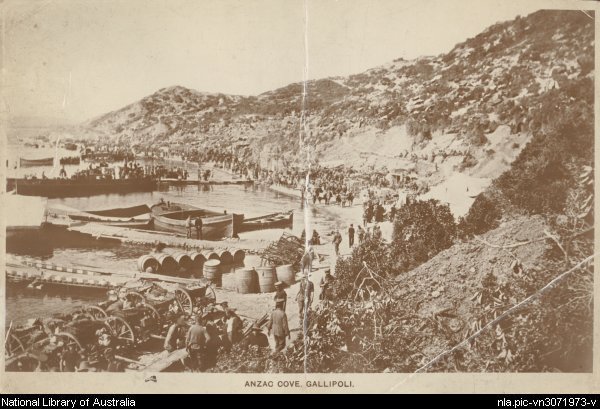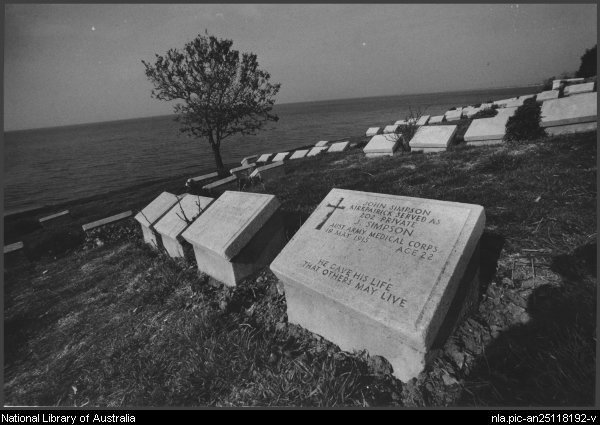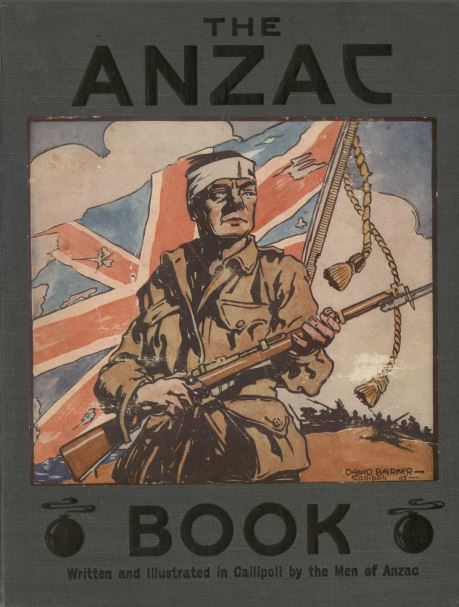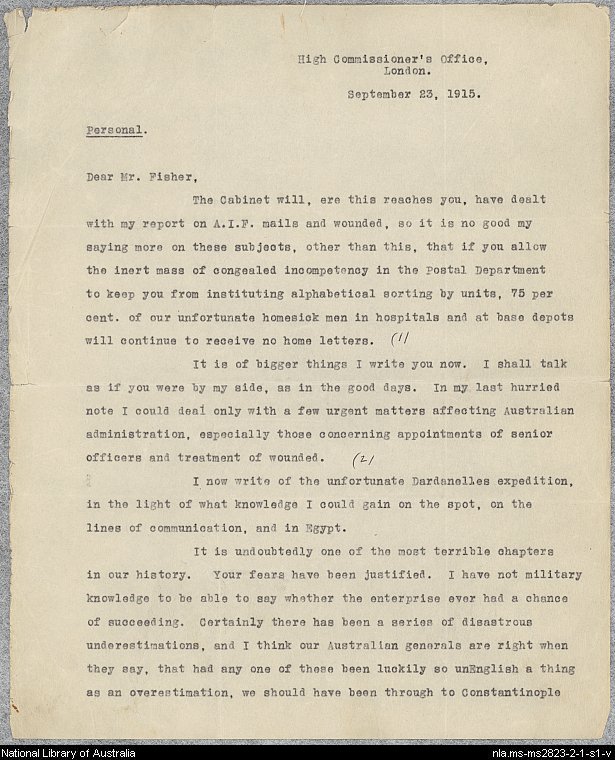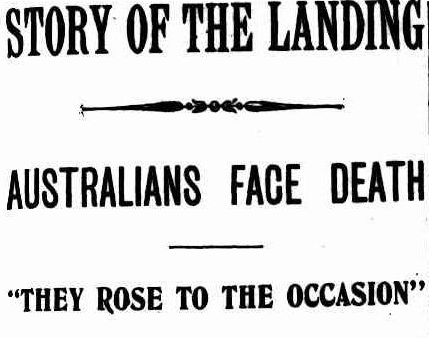On April 25, 1915, the Australian troops, together with troops from New Zealand, Britain and France, landed at what came to be called ANZAC Cove. They aimed to assist a British naval operation to force the Dardanelles Strait and capture the Turkish capital, Constantinople.
Attempts to break the Turkish lines failed. The campaign lasted until December when the troops were successfully evacuated.
Selected published works
The National Library holds an extensive collection of the books published about the Gallipoli campaign since 1915.
Official History of Australia in the War of 1914-1918
The first 2 volumes are devoted to the Gallipoli campaign:
- Vol. 1 The story of ANZAC from the outbreak of war to the end of the first phase of the Gallipoli campaign, May 4, 1915
- Vol. 2 The story of ANZAC from 4 May, 1915, to the evacuation of the Gallipoli Peninsula
Gallipoli one long grave by Kit Denton is a well illustrated work with many photographs.
Gallipoli by Les Carlyon is a recent popular history of the campaign.
Gallipoli an Australian encylopedia of the 1915 Dardanelles Campaign by Ronald J Austin is on open access in the Main Reading Room Reference collection at RF 940.426 A937.
Published personal narratives are also held. In the catalogue search by the following subject heading:
The following keywords can also be used:
- 'gallipoli personal narratives'
- 'gallipoli diary'
Map, manuscript and pictorial material
In addition to the published material on Gallipoli, the Library also holds unpublished material in map, manuscript, and pictorial form.
In the catalogue type the keyword 'gallipoli' and using the options to the right of the search results, limit the search to the required format, for example 'map'.
Keywords can also be used, for example:
- 'gallipoli manuscript'
- 'anzac cove photograph'
Battlefield guides
The following guides provide useful information about the Gallipoli battlefield:
Gallipoli: the battlefield guide by Mat McLachlan
Gallipoli: a battlefield guide by Phil Taylor and Pam Cupper
Case Study
Question: "I am looking for information on the man with the donkey who was at Gallipoli"
Answer: The ‘man with the donkey’ was John Simpson Kirkpatrick, a stretcher bearer, who with his donkey ‘Duffy’ worked to carry the wounded to safety at Gallipoli until he himself was shot and killed.
A search of the online catalogue using the terms ‘John Simpson Kirkpatrick’ retrieves several results, including biographical cuttings files and photographs. Books include Dust donkeys and delusions : the myth of Simpson and his donkey exposed.
All are available to request and view at the Library.
Online resources include the following:
